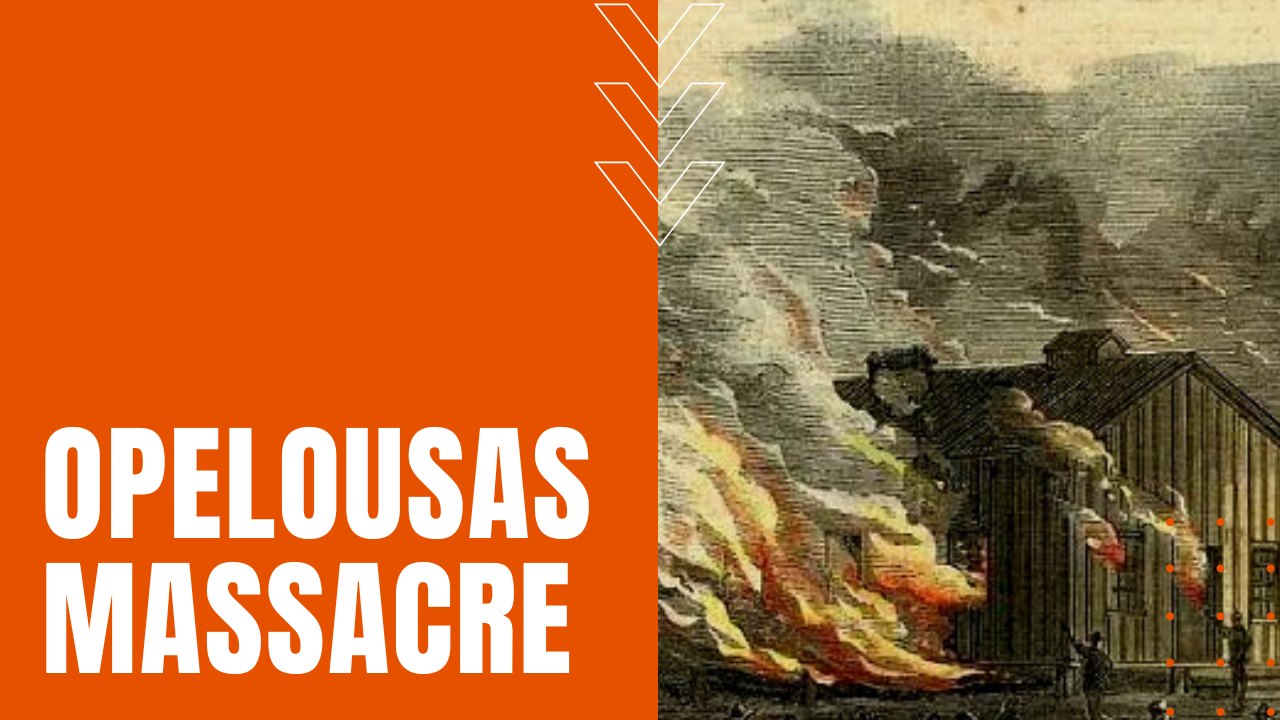The Opelousas Massacre

What Caused the Opelousas Massacre?
During the peak years of post-Civil War Reconstruction, in 1868, the Republican majority Louisiana state legislature ratified a new Constitution, coat-tailing the Fourteenth Amendment to the U.S. Constitution by granting citizenship rights to recently emancipated African Americans, leading white carpetbaggers like 18-year-old Ohio teacher, Emerson Bentley, to help blacks in Opelousas Louisiana achieve economic, political and educational parity with whites.
Unwilling to cede power to newly-freed African Americans, white Democrats in St. Landry Parish—the most populous parish in the state—pushed back against Republican-led Reconstruction efforts by joining hate groups like the Knights of the White Camelia, The Innocents, the Seymour Knights and the Ku Klux Klan.
As white vigilante groups inflicted violence against blacks and white Republicans, on September 13th, 1868, Republicans held a meeting in Washington Louisiana, not far from Opelousas, which soon turned into an angry face-off with armed Seymour Knights. A misfired rifle elevated tensions to near riot conditions, only to de-escalate when Bentley agreed to publish an honest accounting of events in the city’s leading Republican newspaper, The St. Landry Progress.
Deadly Louisiana Massacre of 1868
Instead, Bentley’s published testimony of Republican intimidation by white Democrats furthered the wrath of white hate groups, leading to an outbreak of violence on September 28th, after rumors of an armed black uprising brought back generational fears of mass slave revolts against white slaveholders.
With black lives no longer valued as slaves, on the first night of violence, 29 African American men were taken to a local prison, leading to the summary execution of 27 men without due process or trial.
Unremitting bloodshed continued over the next two weeks, witnessing the deaths of African Americans in their homes or on the streets of Opelousas, including the public murder of C.E. Durand, the white editor-in-chief of the St. Landry Progress.
By the time the violence ended, more than 250 people—the vast majority African American—were dead, effectively reversing Reconstruction-era gains for freed blacks in Louisiana. During the city’s two weeks of racial homicide, all Republican-leaning newspapers were burned to the ground, and while Republican presidential candidate Ulysses S. Grant handily won the White House that same year, not a single Republican vote was counted in St. Landry Parish.
The Opelousas Massacre of 1868 was yet another stain on America’s slow embrace of equal rights.
